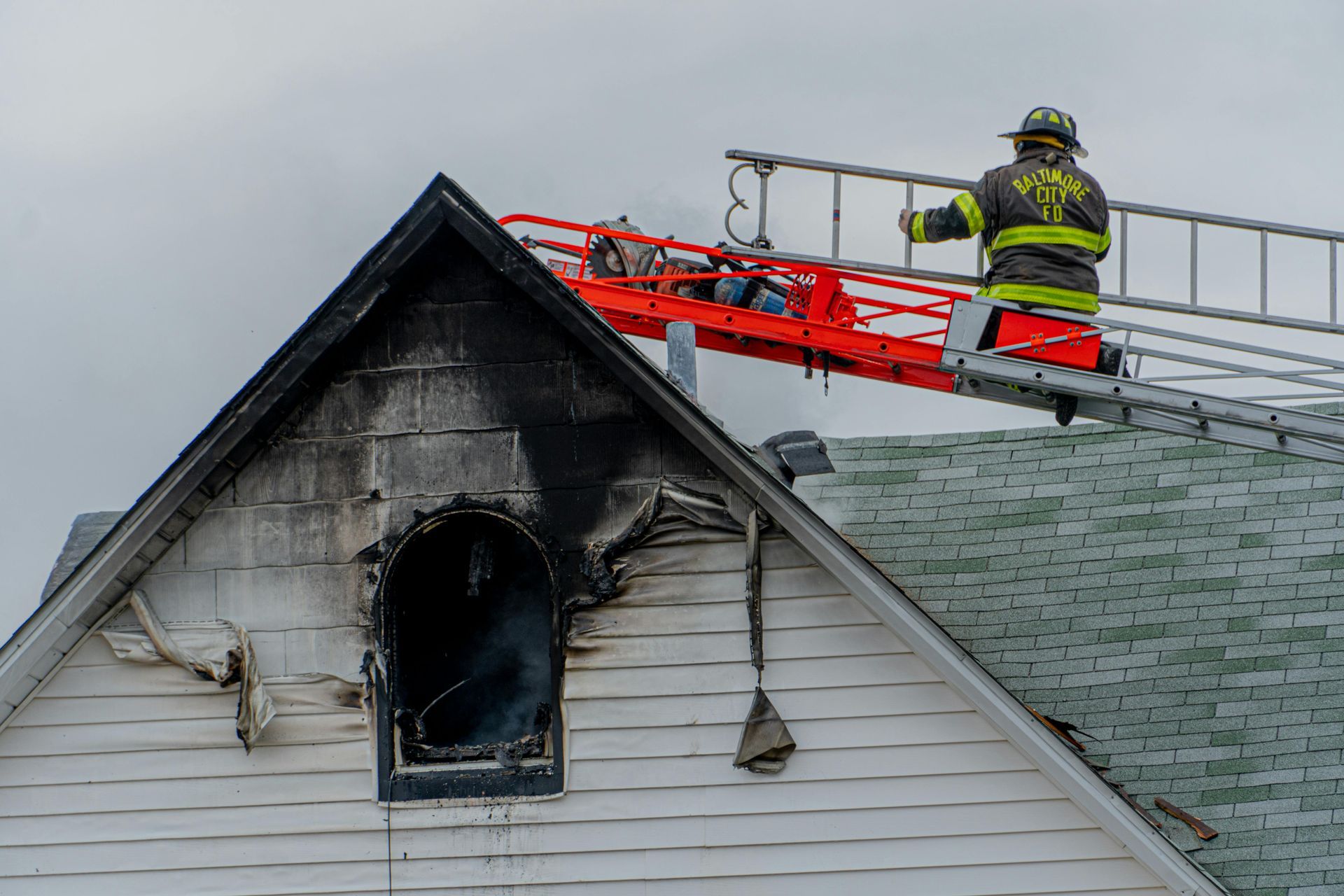What do I do if my home has been damaged in a disaster?
What do I do if my home has been damaged in a disaster? A Comprehensive Guide
If your castle's just had a rough battle with Mother Nature, breathing easy might be the last thing on your mind. But hey, turning chaos into order is the game, and here's how you start. First up, get on the horn with your insurance provider. They've been waiting for your call, believe it or not. Next, nudge the folks at government organizations for a bit of aid; they've got resources you wouldn't believe. And hey, if the wallet's feeling light and mortgage payments are looming like dark clouds, let your mortgage servicer in on your saga. Adjustments can be made, and you won't be walking the plank to foreclosure. It's all about kicking off the recovery process with a bit of grace under pressure.
Beyond the immediate firefight, this guide's gonna walk you through a whole recovery process smoother than a well-oiled door hinge. We're diving into documenting the damage to your home - a crucial step for the insurance dance - and touching base on how to mobilize your forces for securing and repairing your homestead. And because knowledge is power, we'll shed some light on navigating the murky waters of insurance claims and fishing for financial assistance. Get ready for a journey from turmoil to tranquility. Here at Hammer Stars, we've got your back every step of the way - from rubble to rebuild.

Immediate Steps to Take After Disaster Strikes
Alright, your home's taken a hit, and it’s showtime for action—no dilly-dallying. Snap into gear by calling your insurance company to kick-start that claim, because the clock's ticking. Next move, reach out for aid from government organizations; you might be surprised at what's available. And don't forget about your mortgage servicer - keeping them in the loop could save your bacon when it comes to those payment deadlines. These steps aren't just busy work; they're your golden tickets to laying the groundwork for a solid recovery process.
Ensuring Safety and Well-being
You've heard it a million times, but it bears repeating: safety first, especially when your abode’s been roughed up by disaster. Don’t even think about playing hero by rushing back into the danger zone. Let the pros give the all-clear before you even peek inside. Those walls and roofs aren’t just for show; they've got to be sturdy. And let's not overlook the sneak attack by gas leaks - they're silent but deadly. It's not just about getting back on your feet; it's about making sure you and your crew stay standing.
Prioritizing the safety of you and your loved ones
When disaster rudely interrupts your peaceful living, keeping your squad out of harm's way takes top billing. Forget about the stuff and the stones; it's the folks under your roof who matter most. Until the coast is clear, steer clear of the disaster scene. Temporary shelter might not be home sweet home, but it sure beats risking neck and limb. And remember, those gas leaks? They're nothing to sniff at. Safety's not just a fancy buzzword—it’s the solid foundation you're gonna rebuild on.
Documenting the Damage
Once you've made sure the coast is clear and everyone's safe, it’s time to switch gears to detective mode. Whip out your camera or smartphone and start snapping away. They say a picture’s worth a thousand words, and in this case, it might just be worth a thousand bucks too. Getting a visual record of all the damage to your home is gonna be crucial for insurance. Alongside those photos, scribbling down a tally of what's damaged or gone missing rounds off your investigative duties. It’s all about building a bulletproof case for your insurance claim.
Taking photos and making a list of damaged or lost items
Remember, your smartphone is now your best buddy and a ticket to a smoother claim process. Go on a photo spree, covering every inch of the damage. Those snaps? They’re gold dust for your insurance claim. But don’t stop there. Penning down a 'who’s who' of damaged or vanished items gives you an edge. This list ain’t just a shopping spree wish list; it’s a critical dossier that speaks volumes about the damage to your home. Together, these visual and written logs are your one-two punch in the insurance tango.
Contacting Your Insurance Company
Done playing paparazzi with the damages? Good. Now, it’s time to get chummy with your homeowners insurance folks. These are the conversations that kick things into high gear. Dial-up, explain your predicament, and remember, patience is more than just a virtue here—it’s a necessity. Trust me, a calm, detailed chat about the disaster that turned your home into an episode of "Renovation Gone Wild" can set the wheels in motion towards getting your nest back to its former glory.
Initiating a claim and understanding the process
Initiating a claim might feel like you’re stepping into the great unknown, but here’s the deal: it’s more like a structured dance. Knowing the steps - from how to reach out, to understanding what your insurance policies actually cover - can turn an overwhelming process into a walk in the park. This isn’t about tossing a coin into a wishing well; it’s engaging in a well-defined process to ensure your peace of mind. And with a respectful nod to your homeowners insurance, you’re setting the stage for a comeback story worthy of the ages.
Securing Your Property and Making Temporary Repairs
Here at Hammer Stars, we know a thing or two about patching things up. Before you can even whistle for a tune-up, make sure to prevent further calamity by tackling temporary repairs. It’s like putting a band-aid on a scrape until you can get to the doc. Cover those broken windows, plug up leaks, and give a shout to utility companies if there's a home fire in the mix. Remember, these aren't just chores; they're essential steps to safeguarding what’s left and laying down the groundwork for the real fix-up.
Preventing Further Damage
Let’s get down to brass tacks. You’ve got a window that’s seen better days or a roof that’s flashing the sky—it’s time to batten down the hatches. Securing damaged areas pronto can keep a bad situation from going to worse. Think of it as damage control (quite literally). Whether it's slapping a tarp over roof damage or boarding up broken windows, these quick fixes do more than just prevent the elements from waltzing in; they’re your home’s first line of defense until the cavalry arrives in the form of repair professionals.
Covering broken windows and leaks
No one's saying you need to be a craftsman, but a bit of DIY can go a long way. Broken windows and leaks are like open invites to Mother Nature and her not-so-pleasant elements. Cover them up with whatever you got—plywood, tarps, you name it. It’s not just about keeping the rain out; it’s about standing guard over what’s yours until you can mend the breaches properly. Think of it as your home’s suit of armor against the forces bent on sneaking in.
Keeping Track of Repair Expenses
While you're playing handyman, keep one eye on the cash register. Every penny spent on band-aids for your home needs tracking like a hawk. Receipts, invoices, the back of napkins—whatever scribbles you’ve got, hoard them. These aren’t just scraps of paper; they're the breadcrumbs that lead to getting reimbursed. So, chat it up with your insurance adjuster, show off your collection of expenditures, and make sure they get that without these essential fixes, your castle would be in a heap more of trouble.
Saving receipts and maintaining a record for reimbursement
Evidence, evidence, evidence. Saving receipts is more than just a good habit; it’s your financial lifeline in the restoration saga. It’s about compiling a ledger that says, "Here’s where the treasure was spent to keep the ship afloat." Whether it's temporary repairs or covering extra living expenses when you’re bunking elsewhere, every slip of paper is a piece of the puzzle. Presenting this dossier to your insurance adjuster is like laying down your hand in a high-stakes game, ensuring you get every coin you're owed back in your coffers.
Navigating Insurance Claims and Financial Assistance
Alright, let’s not sugarcoat it: navigating through the murky waters of insurance claims and scouting for financial assistance can feel like deciphering an ancient tome. But fear not. Arm yourself with the knowledge of what your homeowners insurance covers, keep those receipts handy for living expenses, and get that claim filed pronto. Whether it’s assessing the damage from afar because you can’t get home or just trying to gauge the extent of your misfortune, understanding these processes is like having a map in uncharted territories. It’s all hands on deck here at Hammer Stars, ensuring you’re not going it alone.
Understanding Your Homeowners Insurance Policy
Let’s break it down: your homeowners insurance is your shield in the face of disaster. But not all shields are created equal. Some cover the dragon’s fire, others the flood. Wrapping your head around what’s protected and what’s out in the cold can spare you heartaches down the road. And hey, if there’s a crack or two in your coverage, now's the time to spot it. Broken windows, storm damage, or whatever else came knocking—knowing your policy’s finer print is like having a secret weapon in your back pocket.
Knowing what is covered and what isn't
Now, here's the deal folks - insurance can be as tricky as a fox in a hen house. At Hammer Stars, we've seen it all. From storm damage to a tree playing knock-knock on your living room window, we know the drill. But here's the kicker: not everything is covered under your standard homeowners insurance policy. Protecting your property means knowing the ins and outs of what your policy actually covers. So, don't wait for the rain to start pouring down to check if flood damage makes the cut, or assume that your garage turned swimming pool is automatically covered. It’s about getting down to the nitty-gritty now, not when you’re knee-deep in water.
Exploring Disaster Assistance Programs
If your place got hit harder than a fastball, don't throw in the towel just yet. Beyond insurance, there's a slew of disaster assistance programs ready to pitch in. Whether it's the American Red Cross dishing out meals and a bed, or federal agencies offering a financial helping hand to patch things up, understanding these resources is key. They're here to help you recover, step by step, from the mess Mother Nature left behind.
FEMA and other resources for displaced homeowners
At Hammer Stars, we've got the lowdown on getting back on your feet. For those hit hard, FEMA is like that reliable pinch-hitter. They step in with rental assistance for qualified applicants finding themselves suddenly home-base-less. Think hotel expenses for short-term lodging, initial rent money, and even a security deposit. That's right, while your abode is getting back to its glory, these resources ensure you’ve got a temporary roof over your head. Remember, navigating through this process requires patience and perseverance, but hey, that’s what gets you to home plate.
Planning Your Next Steps
Once the dust settles and you've got your bearings, it's time to chart the course forward. Here at Hammer Stars, we've seen folks face this crossroad: to rebuild or to relocate. It's a big decision that weighs heavily, not just on the wallet, but also on the heart. This ain’t no impulse buy; it’s about taking a beat to assess what’s best for the future of your family and you.
Evaluating Whether to Rebuild or Relocate
When Mother Nature throws a curveball, the game changes. Facing the aftermath of natural disasters sparks a tough question – should you rebuild what was lost or start fresh somewhere new? At Hammer Stars, we get that it's not just about bricks and mortar; it's about memories and dreams too. If your heart's set on staying, we're here to help rebuild stronger. Considering a new start? We can guide you on that journey, too. Weighing both options, remember, it's not just the cost that counts but the emotional ties that bind you to a place.
Considering the financial and emotional impact
Deciding whether to rebuild your home or pack up and move is hefty, like deciding between thick-crust or thin-crust pizza on game night – both have their merits, but it boils down to what suits you best. Financially speaking, crunching those numbers is critical. Yet, don't overlook the emotional cost. Rebuilding might mend the heart, but moving could offer a clean slate. At Hammer Stars, we’ve seen it all, and we're here to help navigate these choppy waters. Together, we'll find a balance between your checkbook and your heartstrings.
Seeking Support and Advice
After natural disasters shake up your world, feeling lost is understandable. But guess what? You're not on your own. From government-backed entities like Fannie Mae and Freddie Mac offering a breather on mortgages, to FHA providing a safety net, there's support all around. Deadlines extended, foreclosure moratoriums, and assistance for veteran borrowers – these resources are here to keep you from losing your grip. Remember, tapping into these aids isn't showing weakness; it's playing smart.
Reaching out to community resources and counseling services
Rebuilding after a storm isn't just about fixing walls; it's about healing hearts too. That's where community resources and counseling services shine. Whether it’s coping with the loss or stress, these folks are like the bench players ready to support the starters. And here at Hammer Stars, we believe in swinging for the fences. If the weight of reestablishing feels like a heavy bat, these services can help lighten the load, ensuring you don’t strike out on the road to recovery.
Conclusion: Rebuilding Your Life After a Disaster
Stepping up to the plate after a disaster has knocked your home out of the park can feel daunting. But, with the right team in your dugout - insurance folks, disaster relief organizations, and government agencies - getting back to your winning ways is within reach. Initiating a claim, seeking aid, and hashing it out with your mortgage servicer are all key plays. Remember, rebuilding life’s innings is a marathon, not a sprint. Here at Hammer Stars, we’re rooting for you every step of the way.
Embracing a New Normal
Adapting to change post-disaster is like learning to swing a new bat – it takes patience. The new normal might feel unfamiliar at first, but with government programs and FEMA disaster assistance at your back, stepping into the batter's box feels less intimidating. It's all about keeping your eye on the ball and moving forward, one base at a time.
Taking it one step at a time towards recovery
Recovery’s a journey – there’s no sugarcoating it. But remember, every champion was once a contender that refused to give up. Here at Hammer Stars, we understand the rebuilding process is more marathon than sprint. Whether it’s securing temporary housing or making those initial repairs, taking it one step at a time ensures you don’t just survive; you thrive. So, keep swinging; those home runs are closer than they seem.
Hammer Stars



